It sounds like an inspiring tale of revitalization! Restoring a derelict 19th-century mansion to its former glory must have been quite the journey for those three investors. From a crumbling relic to a proud local landmark in Milledgeville, Georgia, the transformation is truly remarkable. The before-and-after photos, captured by Leland Kent of Abandoned Southeast, likely showcase the incredible efforts and dedication poured into this restoration project. What an amazing journey from decay to restoration!
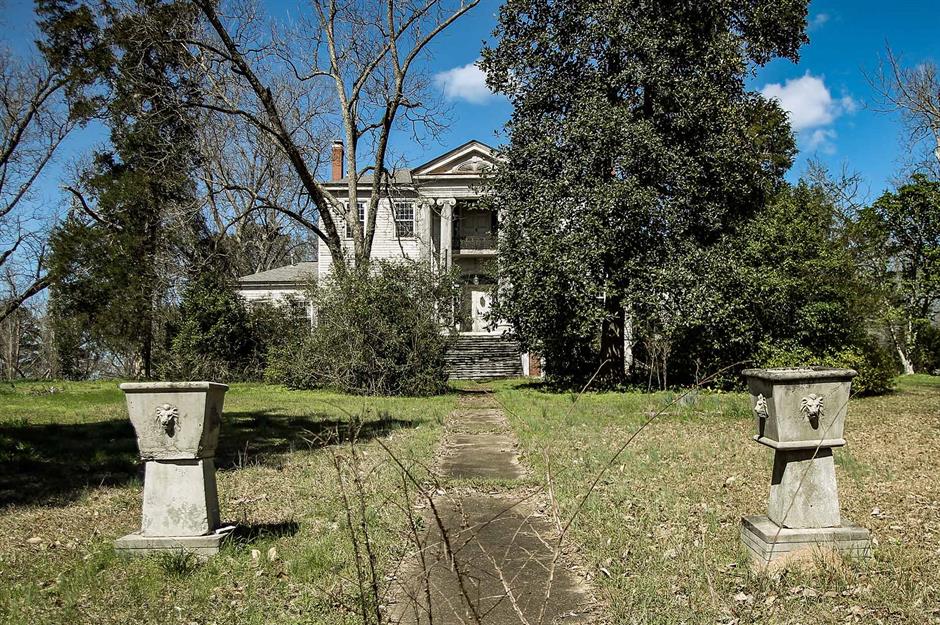
Rockwell House’s journey from obscurity to restoration is a testament to both its rich history and the dedication of those who saw its potential. Built in 1838 for Colonel Samuel Rockwell, the mansion stood hidden behind overgrown foliage and imposing gates, evoking an air of mystery and neglect.
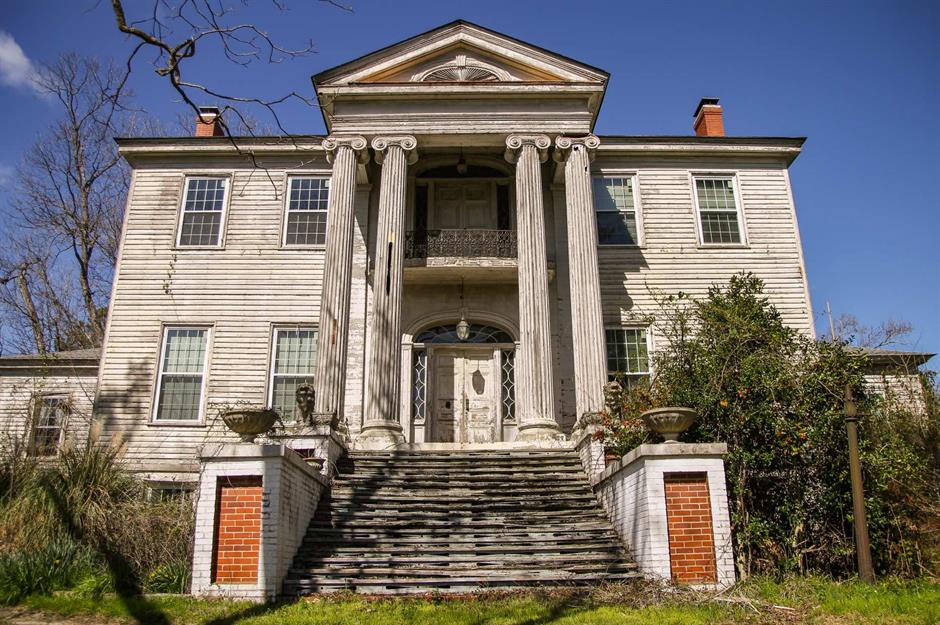
Designed by architect Joseph Lane in the Federal style with Greek Revival influences, its grandeur was evident in its steep steps and imposing Ionic columns, reminiscent of ancient Greek temples. Through the years, it passed through the hands of notable figures, including Democratic Party politician Herschel Vespasian Johnson, who later became the Governor of Georgia.
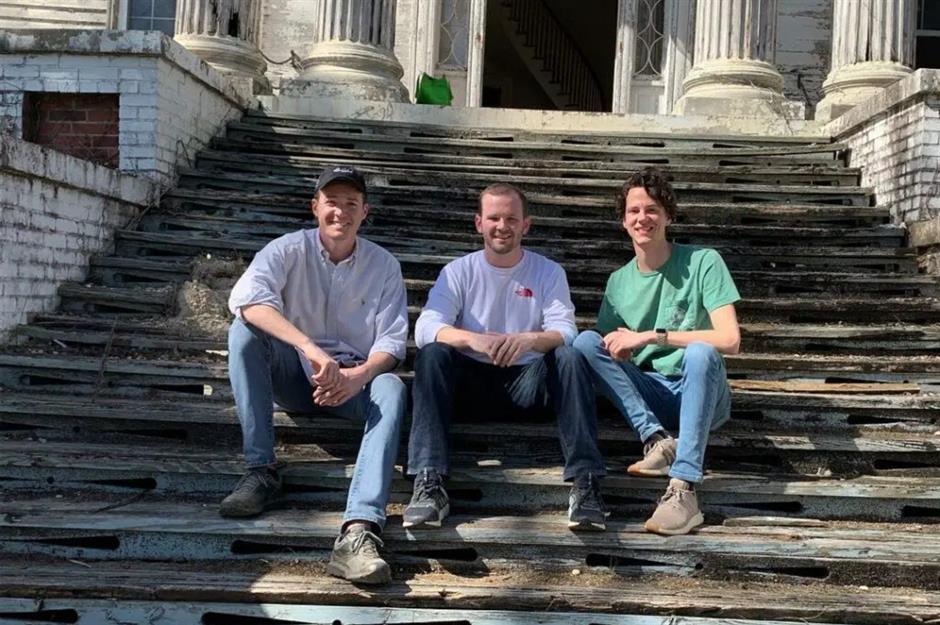
By 2019, after decades of neglect and decay, Rockwell House was in dire need of restoration. Recognizing its historic significance, three young investors – Ross Sheppard, Jacob Hawkins, and Will Walker – embarked on the ambitious journey of revitalizing the mansion. With a bargain purchase price of $350,000 (£254k), they enlisted the expertise of property conservationist Kyle Campbell from Preservation South to guide them through the restoration process.
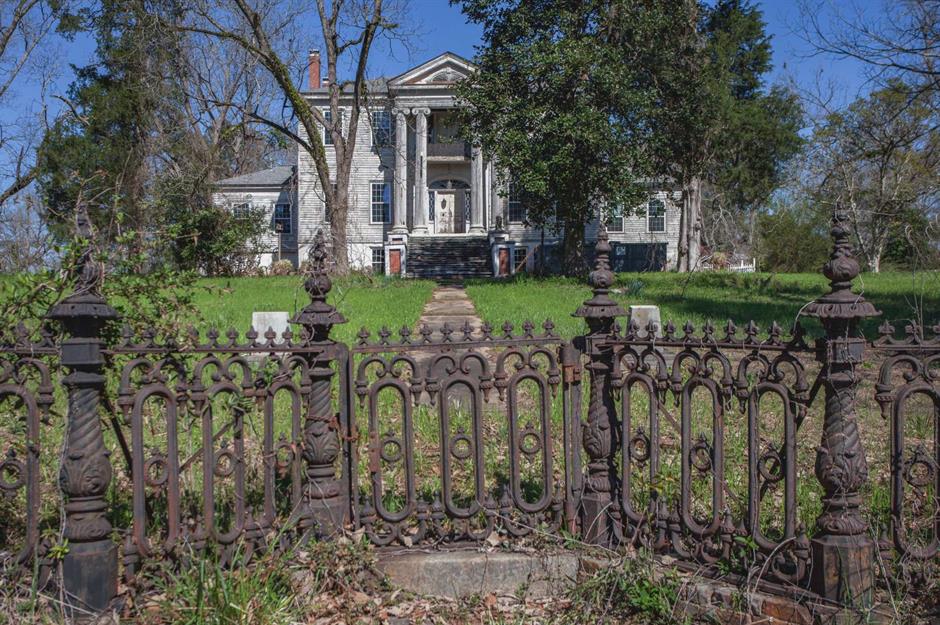
Their efforts bore fruit as they breathed new life into the mansion, preserving its heritage while transforming it into a symbol of pride for the community. The restoration journey even brought forth heartwarming moments, such as when members of the Ennis family, former residents of the house, visited during the restoration. Among them was Buddy Ennis, who spent his childhood years there and discovered his own footprint embedded in the concrete on the back steps – a poignant reminder of the house’s enduring legacy.
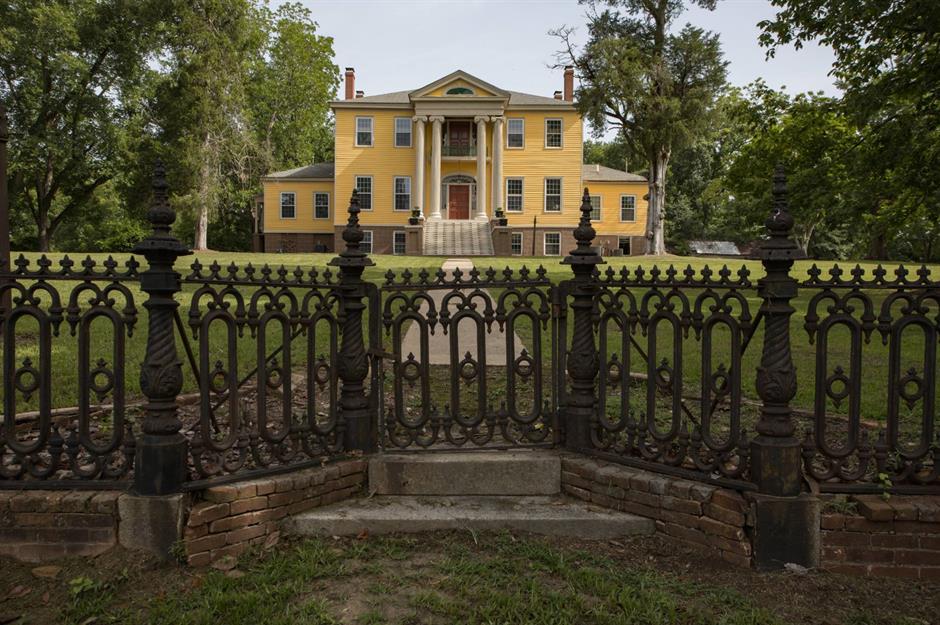
The transformation of the house is truly remarkable, as seen in the resplendent image from February 2021. The choice of sunny yellow for the exterior pays homage to the original color, with hints of this shade peeking through layers of newer paint. Ochre, derived from a natural mix of iron oxide, clay, and sand, was meticulously crafted to match the historical authenticity of the house, blending tones ranging from yellow to deep orange or brown.
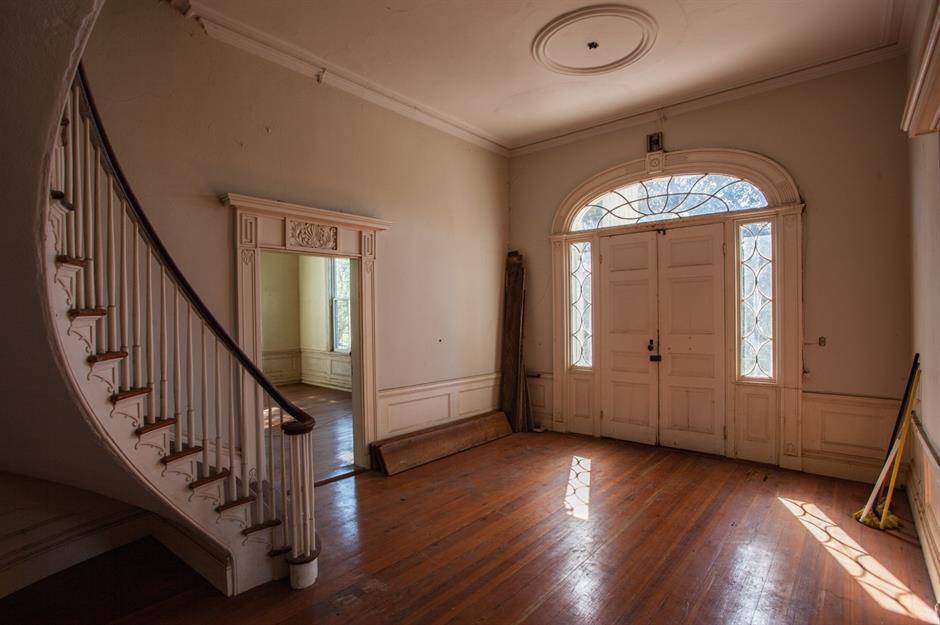
Before the renovation, the entrance hall, though showing signs of age, still retained its elegance with ornate mouldings and a sweeping spiral staircase as its focal point. The grand double doors at the main entrance were framed by patterned glass, allowing natural light to flood into the space.
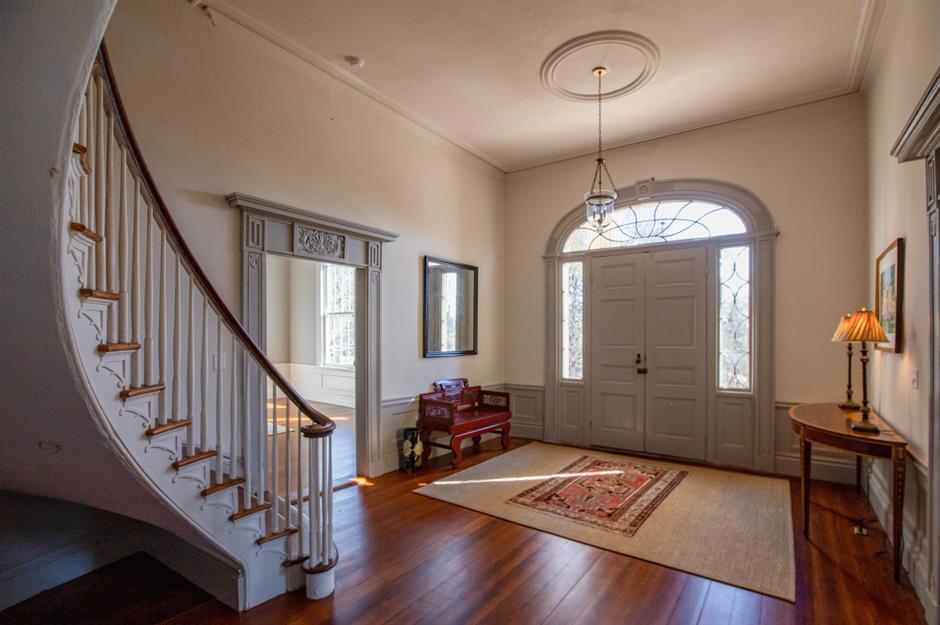
Today, the entrance hall has been rejuvenated with great attention to detail, preserving its exquisite period features. The wood-frame construction of the house, adorned with clapboard siding and stucco over brick and granite foundations, now boasts a finish resembling brownstone blocks, achieved through scoring and painting techniques.
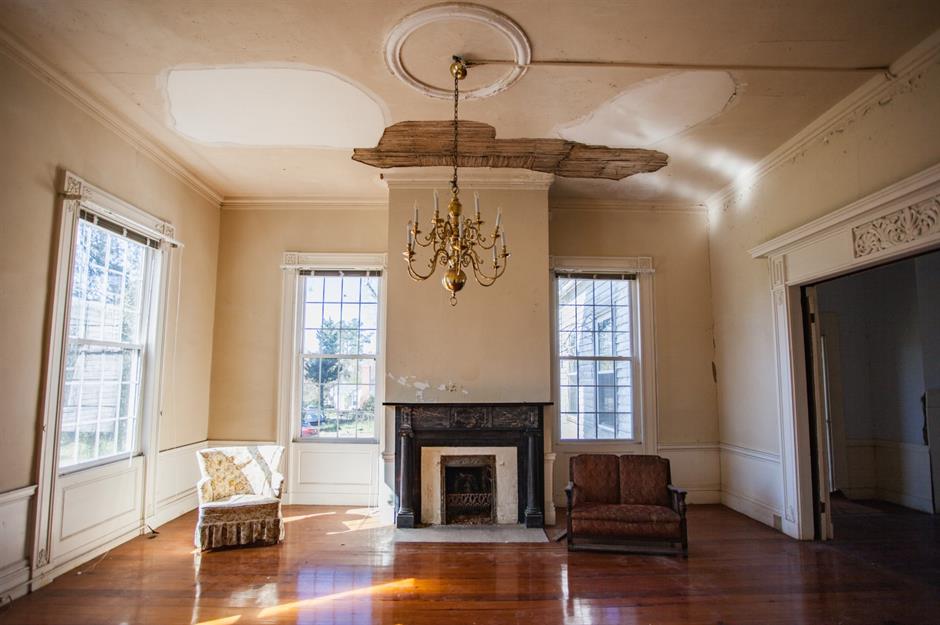
The downstairs sitting room, captured before the overhaul, showcases the mansion’s generous proportions and architectural splendor. Deep alcoves, tall windows, decorative mouldings, and a grand fireplace adorned with carved Greek-style columns create a captivating ambiance, despite the visible wear and tear evident in the crumbling plaster on the ceiling.
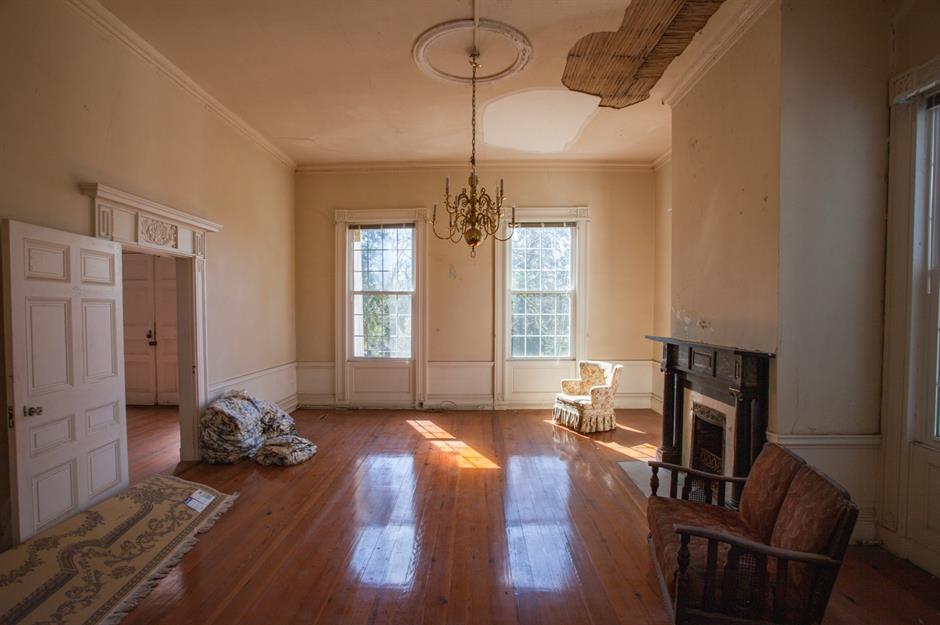
The sitting room, captured before the renovation, showcases the significance of tall sash windows as a design element throughout the mansion. While the original wood frames had been replaced with white vinyl by the time the investors acquired the house, the preservation of the original sashes allowed for their restoration. Efforts are underway to restore the shutters to their original Charleston green hue, adding a touch of historical authenticity to the room.
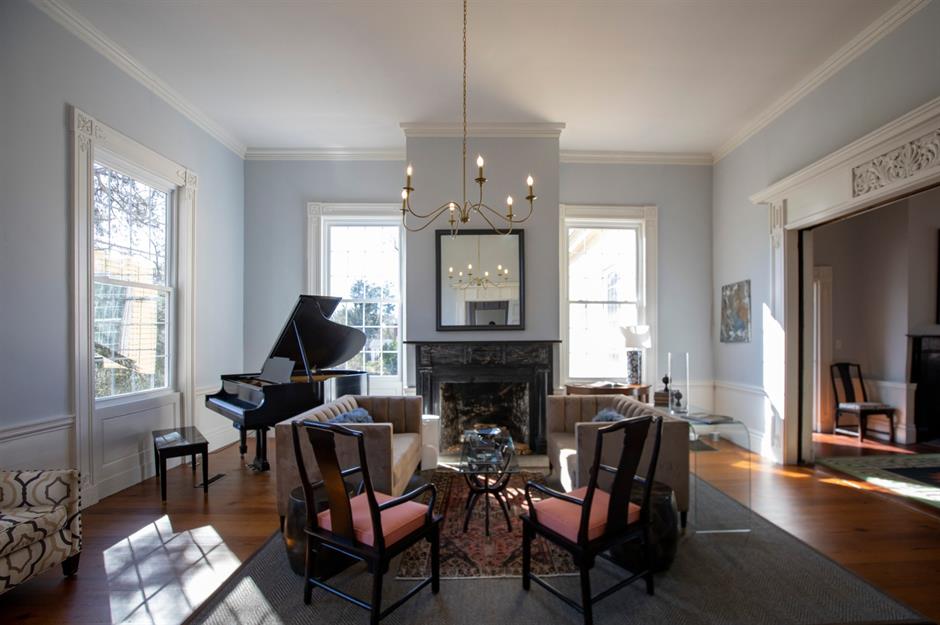
Post-renovation, the sitting room has been meticulously restored, preserving its magnificent original features. Modern furniture, artwork, and a grand piano adorn the space, offering a blend of historical charm and contemporary comfort. Don’t be surprised if the piano starts playing itself—it’s actually a digitally operated pianola!
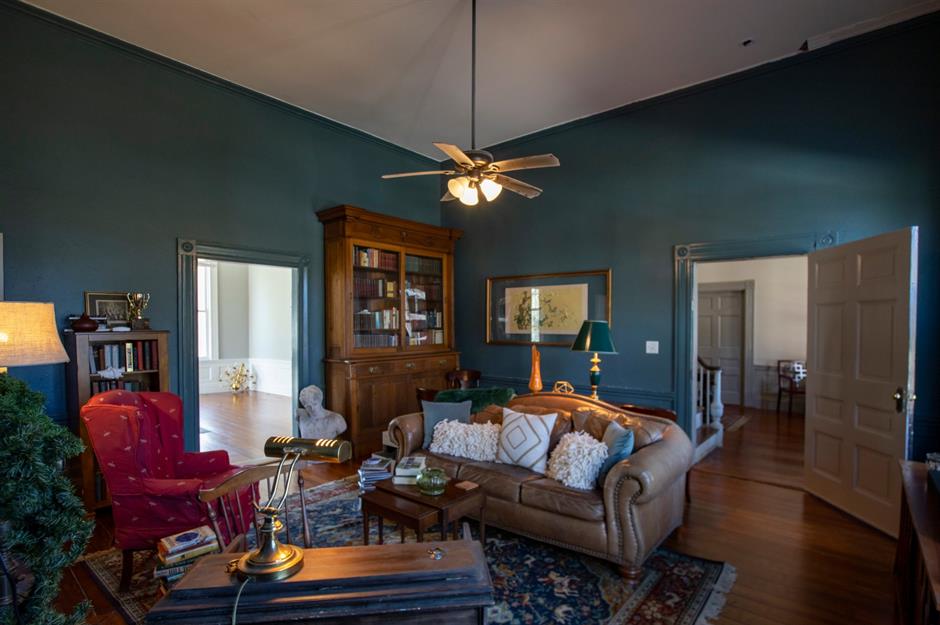
Another refurbished sitting room exudes comfort with its warming blue-green walls, a stark contrast to its sparse predecessor. Thanks to the renovation and redesign, the mansion now boasts 14 inviting rooms, a significant increase from the original eight rooms spread over two floors.
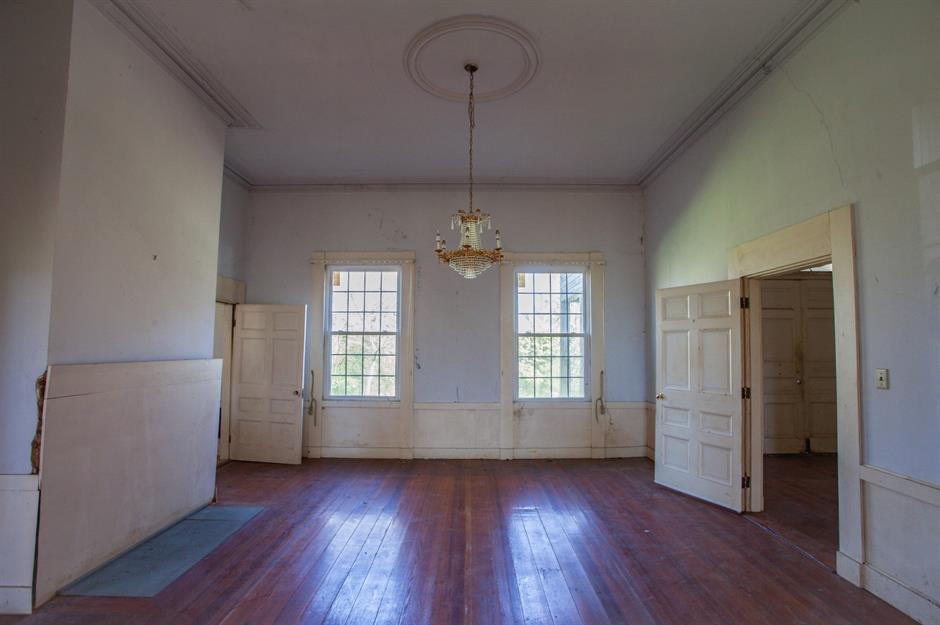
In the dining room, which had suffered neglect over the years, the Winterthur Museum in Delaware played a crucial role in preserving its historic features. They purchased the room’s black marble mantelpiece, intricate woodwork, architrave, and impressions of the plaster around the ceiling, ensuring that elements of its former glory would be conserved for future generations to appreciate.
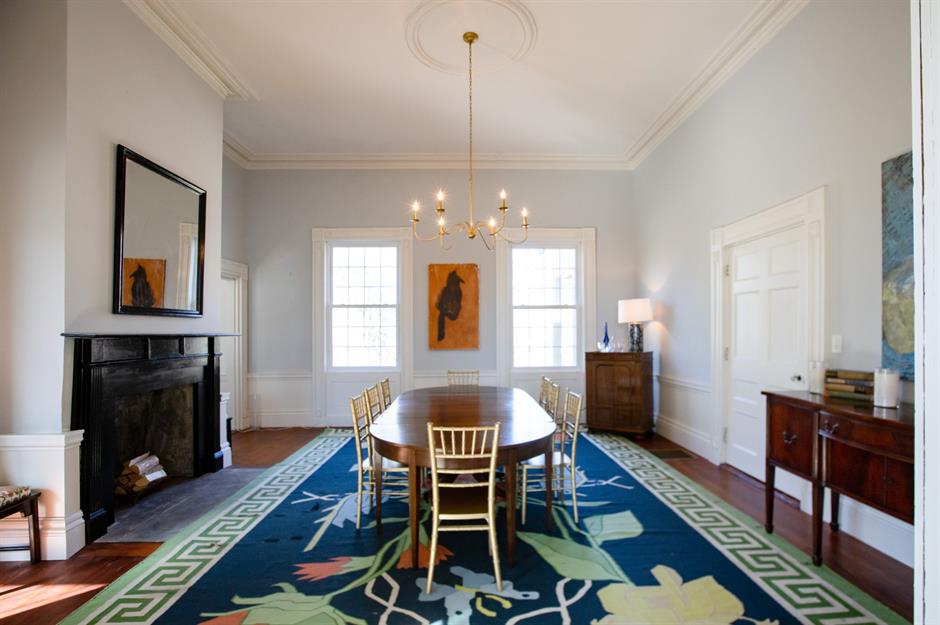
The dining room has undergone a remarkable transformation into a luminous and contemporary space that seamlessly integrates with its historic elements. An original fireplace, hidden until the renovation, adds to the room’s charm, while in some areas, the removal of vinyl flooring unveiled the exquisite original wooden floors.
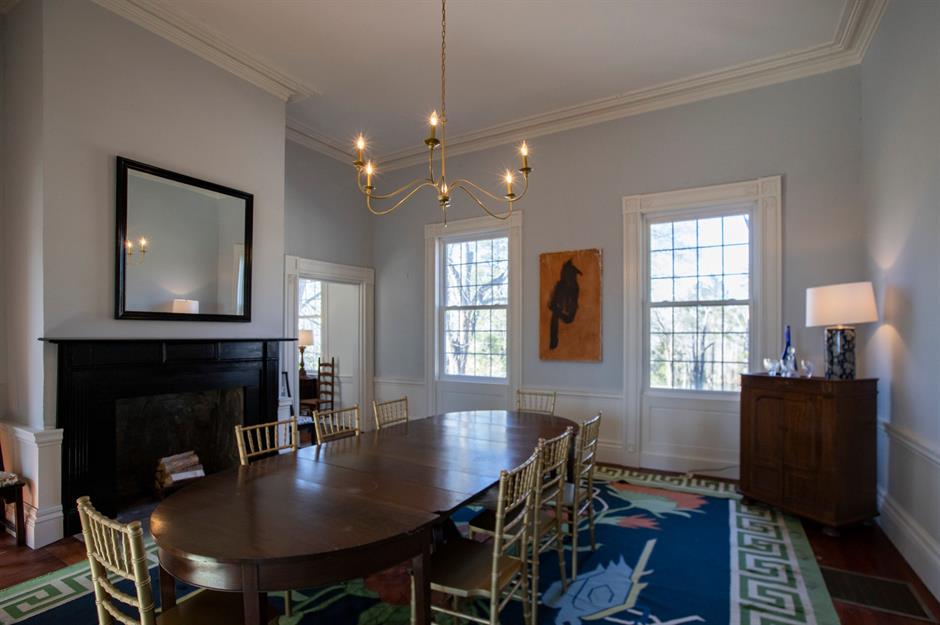
The scale of the renovation project was extensive, encompassing the installation of new electrical, plumbing, heating, and air-conditioning systems. Skilled decorators meticulously restored the original wood floors, repaired plaster walls, and reinstated ornate plaster detailing, ensuring that missing architectural elements were faithfully replicated. All restoration work adhered to the rigorous Standards for Historic Preservation mandated by law.

Before the renovation, Rockwell House featured a distinctive oval spiral staircase, possibly inspired by the ‘chaperone staircase’ found in affluent homes of the era. These staircases provided a vantage point for chaperones overseeing social gatherings, ensuring propriety among young guests.
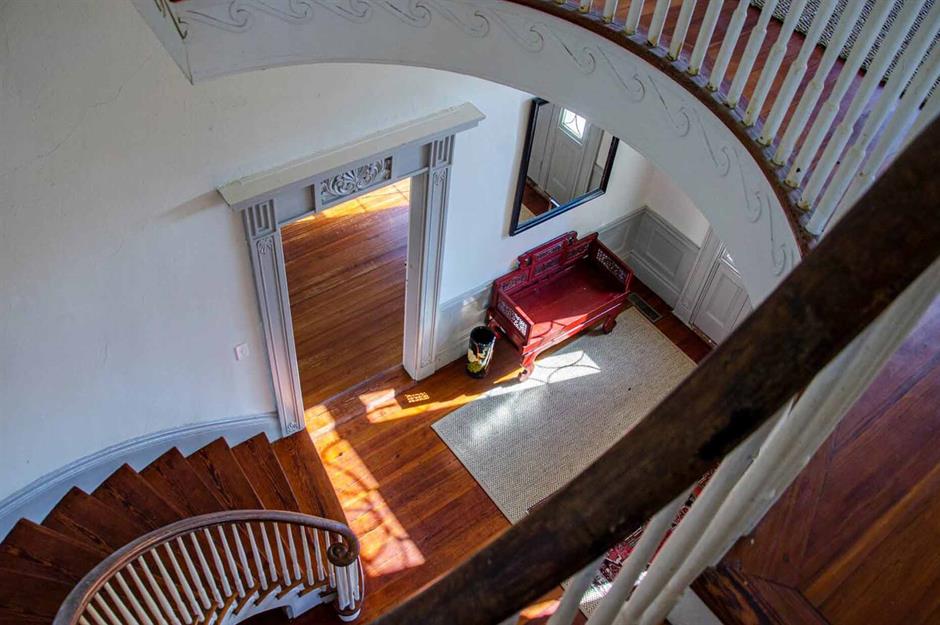
Now restored to its former glory, the staircase showcases its grandeur without the distraction of peeling paint. From the intricately carved balustrades to the patterned woodwork, the craftsmanship exemplified in this architectural marvel is truly remarkable. Notably, the house’s construction employed a notch-and-peg system, eschewing the use of nails except for exterior weatherboarding and interior slats holding plaster, showcasing meticulous attention to detail in every aspect of its construction.
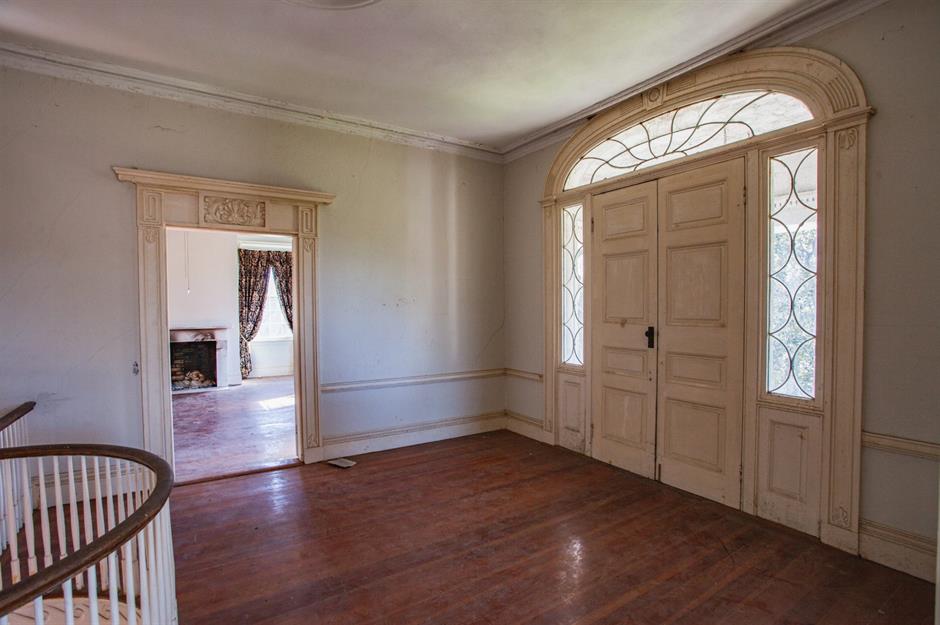
The upper landing, seen here prior to the renovation, echoed the layout and architectural style of the majestic entrance foyer below. Despite showing signs of wear and tear, the leaded glass arch flanking the balcony doors had remarkably endured the passage of time.
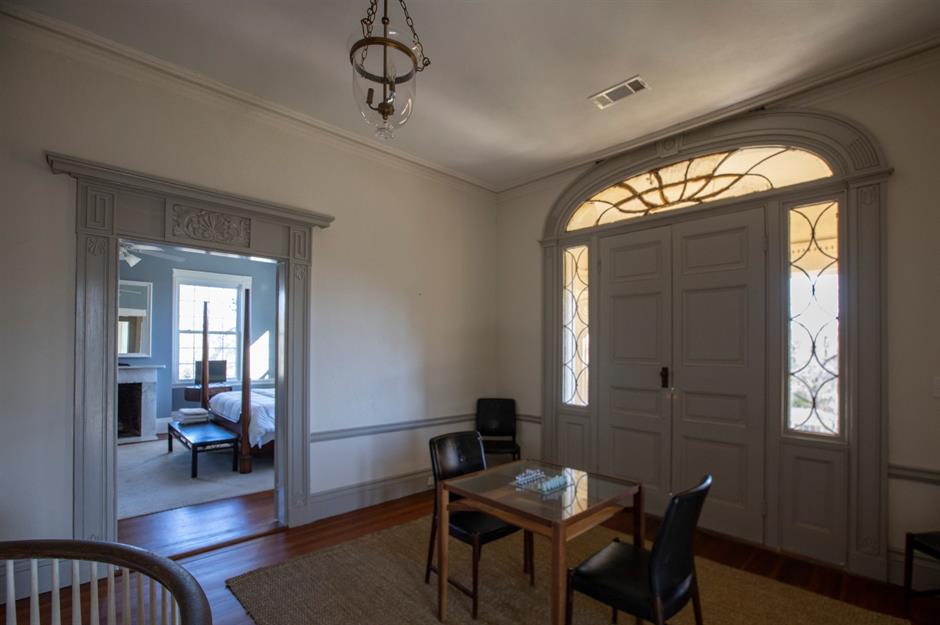
Now meticulously restored, the landing retains its original design, serving as a testament to the house’s historic charm. However, the upper floor once bore the scars of a tragic event. In 1967, Dr Robert Watson undertook the restoration of the house, only for disaster to strike when a worker accidentally ignited a fire while removing paint from the wooden walls with a blow torch. The resulting blaze devastated the upper portion of the property.
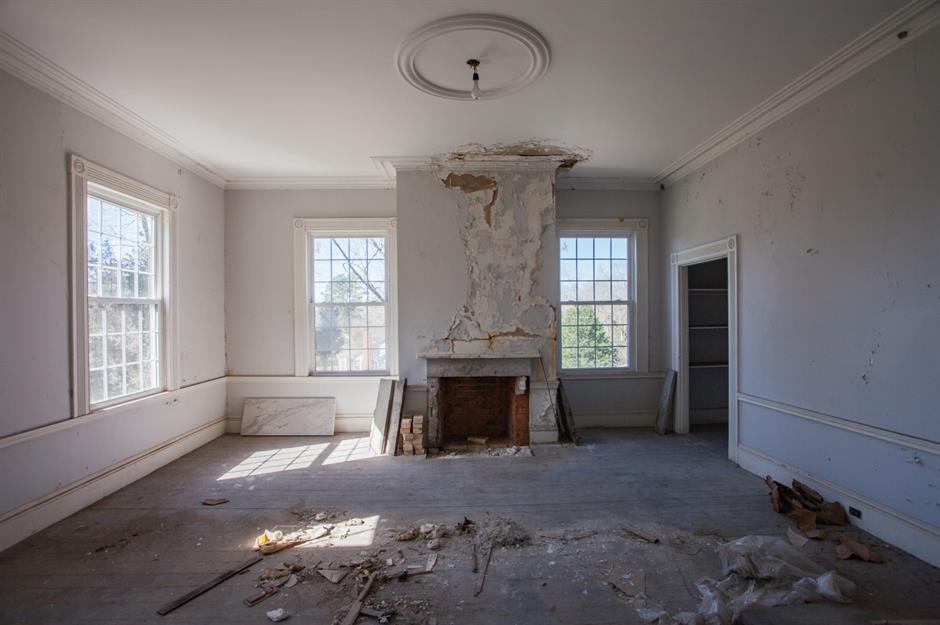
The extent of the destruction can be seen in this room, further compounded by subsequent water damage. The house’s survival hung in the balance, with a local individual expressing interest in purchasing it to salvage the remaining interior details. Fortunately, realtors Joanne and Cecil Ogden intervened, preventing its potential demise. Although the mansion was added to the National Register of Historic Places in 1978, renovations languished, and the property continued to deteriorate.
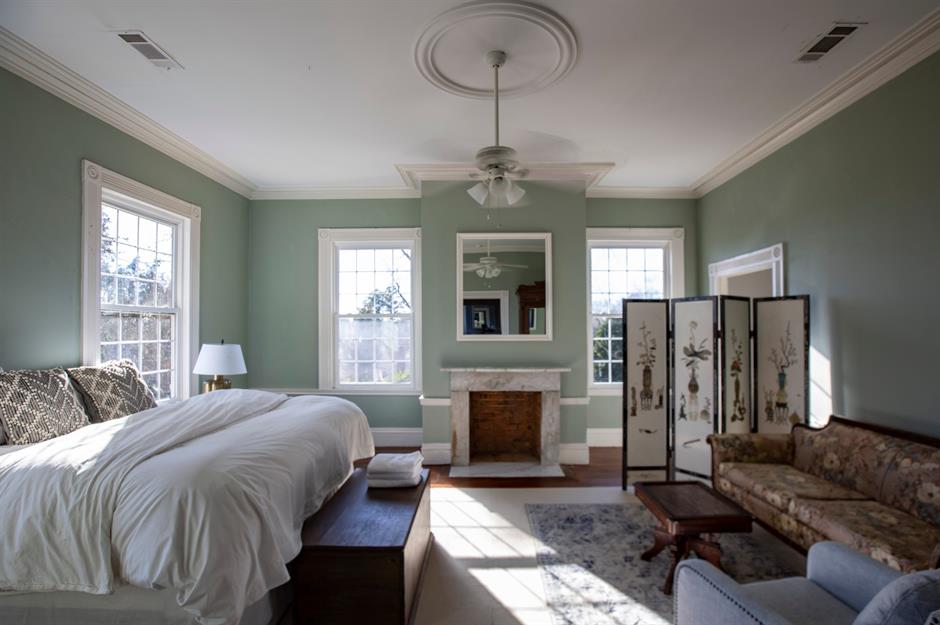
Thankfully, the fortunes of this once-forlorn landmark were reversed by the dedicated efforts of the three investors. With the assistance of skilled local mason Mr Woodrow, the ruined room, along with numerous other areas in the house, underwent restoration. Now transformed, the Green Suite, situated atop the spiral staircase, offers luxurious accommodation featuring a king-sized bed, a comfortable sitting area, and a spacious private bathroom complete with a cavernous shower.
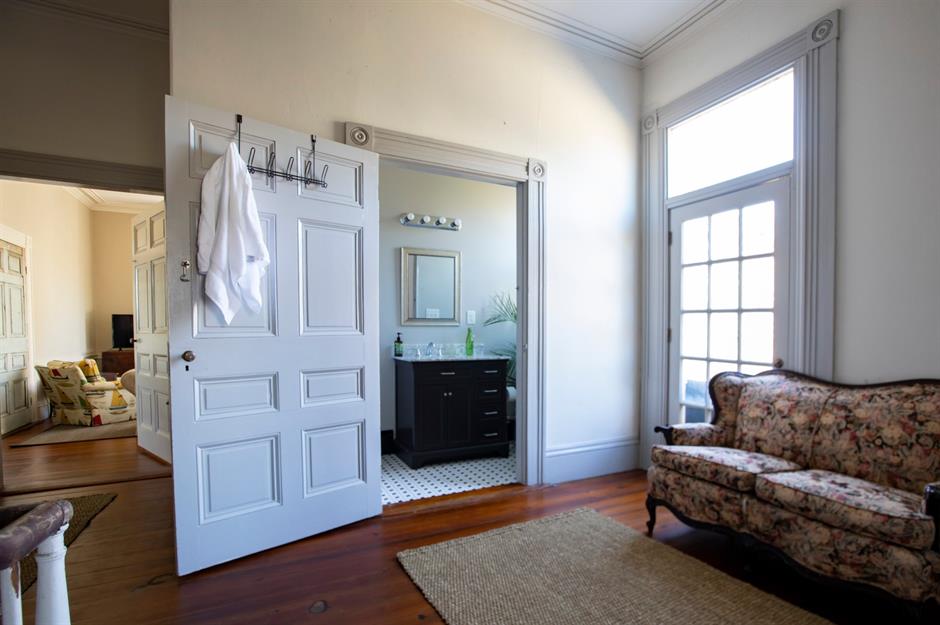
The addition of elegant modern bathrooms to some of the guestrooms reflects the commitment to providing luxurious accommodations. Unfortunately, much of the decorative cornicing and plasterwork surrounding the doorways had deteriorated over time. However, during the restoration process, surviving mouldings in the dining room were meticulously scanned, 3D-printed, and replicated in other areas of the house—a remarkable application of modern technology to preserve architectural heritage.
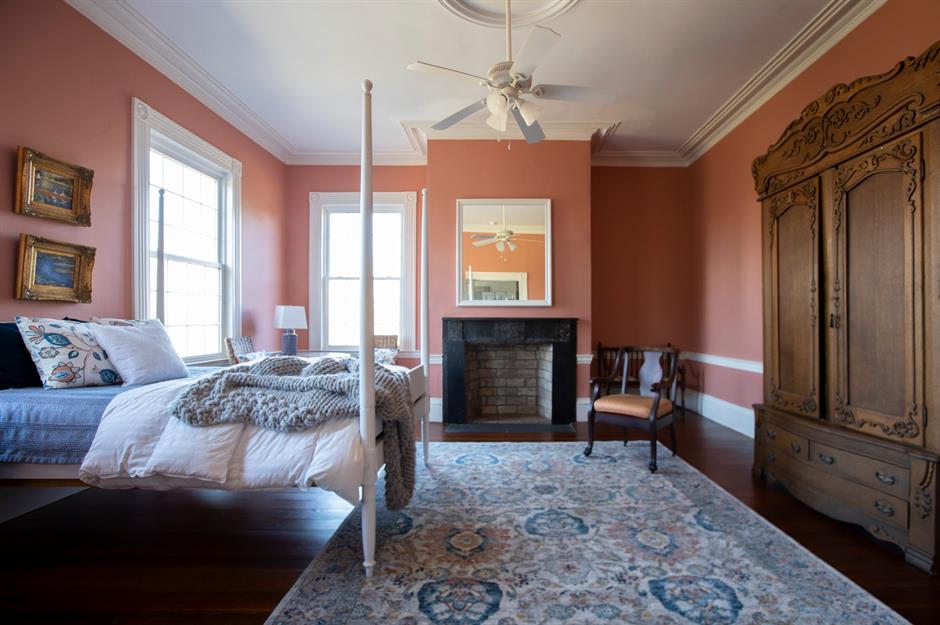
On the first floor, the Pink Suite offers a warm and inviting retreat situated above the rear staircase. Its vibrant coral walls create a dynamic atmosphere that evolves with the changing light throughout the day. Traditional carved wooden furnishings and a lavish four-poster bed provide a perfect balance to the bold color scheme.
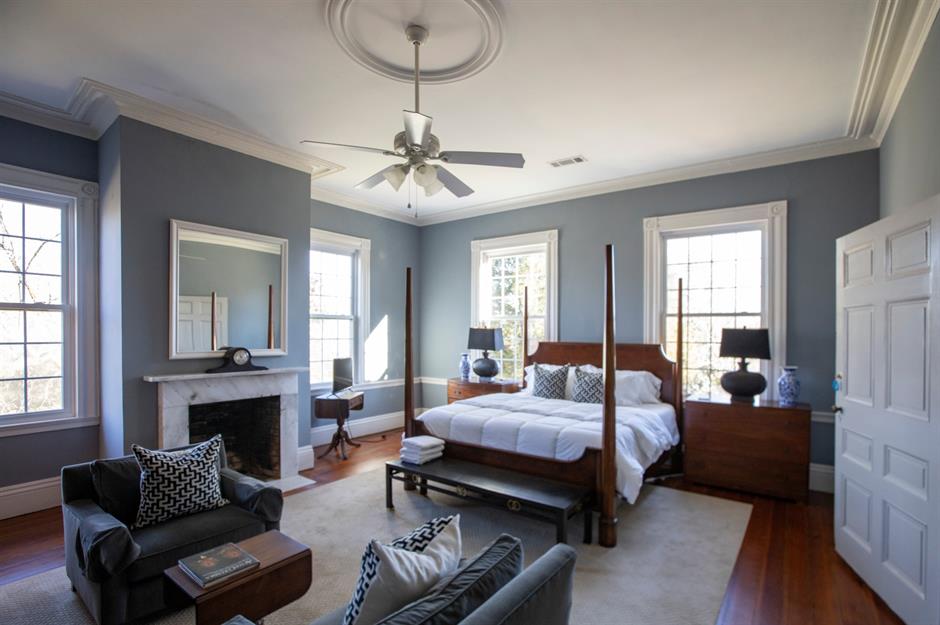
The beautifully renovated Blue Room, adorned with floor-to-ceiling sash windows, exudes a sense of tranquility and sophistication. This one-room suite boasts its own private sitting area and seamlessly integrates luxurious contemporary elements with the historic architecture and detailing of the space. With a grand king-sized bed, a restful night’s sleep is practically guaranteed.
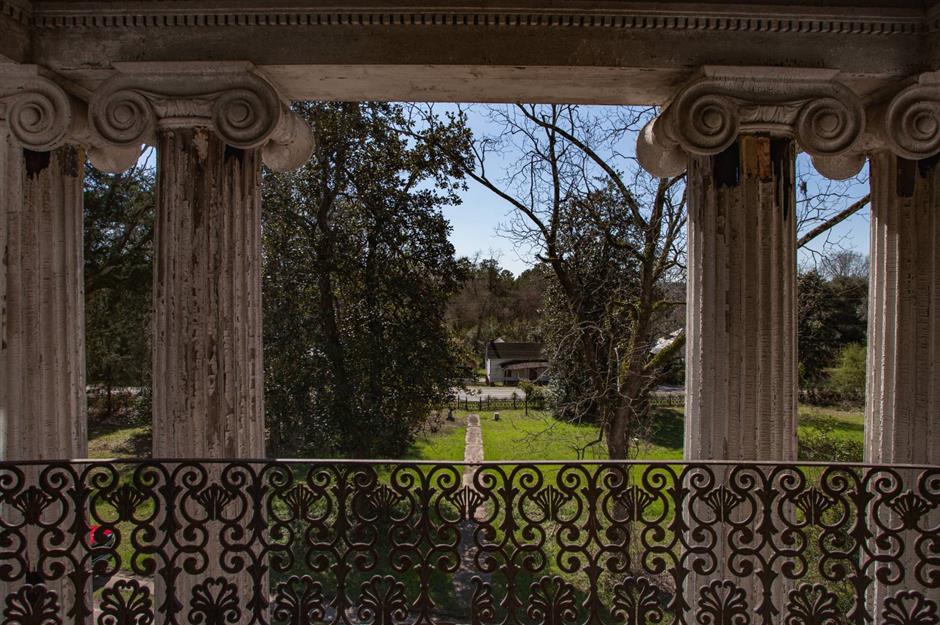
Before the estate’s transformation, the grounds had become overgrown, reclaimed by nature’s embrace. Local legends, including rumors of a hidden gold hoard beneath the foundations, lend an air of mystery to the mansion’s history. Imagining Colonel Rockwell or Governor Johnson concealing gold bars beneath one of the majestic Ionic columns adds to the allure of the property’s storied past.
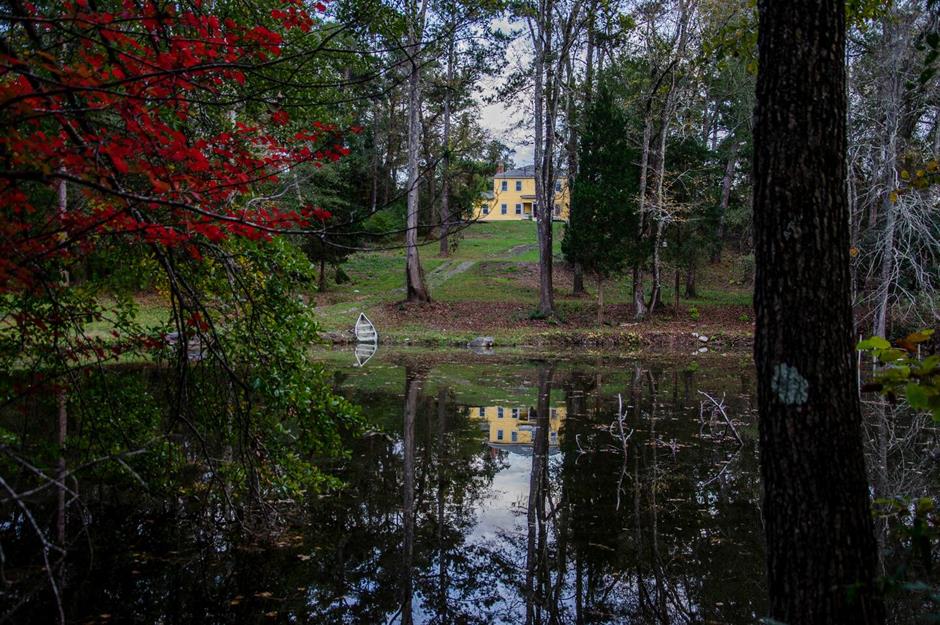
While the quest for hidden treasure may not have yielded gold, the restoration project uncovered the natural splendor of the estate. As depicted in this post-renovation image, the investors meticulously cleared overgrowth and landscaped the lush grounds, all while preserving the majestic grove of old oak and magnolia trees that grace the 12-acre garden.
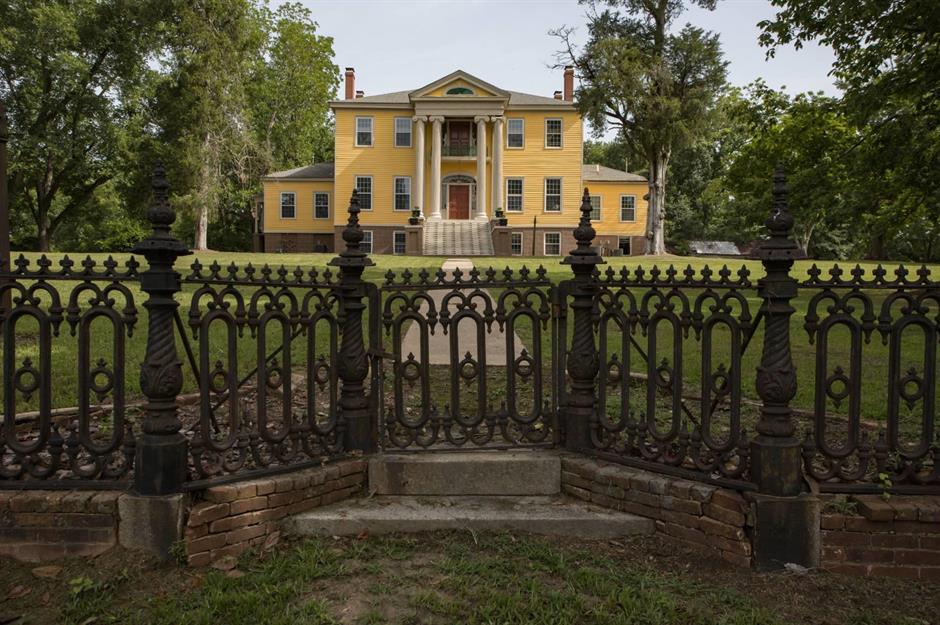
Undoubtedly, the restoration of this historic home stands as a resounding success. Now open for overnight stays via Airbnb, as well as for weddings and events, visitors have the opportunity to immerse themselves in the rich history of the Deep South. To learn more about this exquisitely restored landmark, interested individuals can explore the mansion’s website and follow its restoration journey on Facebook.